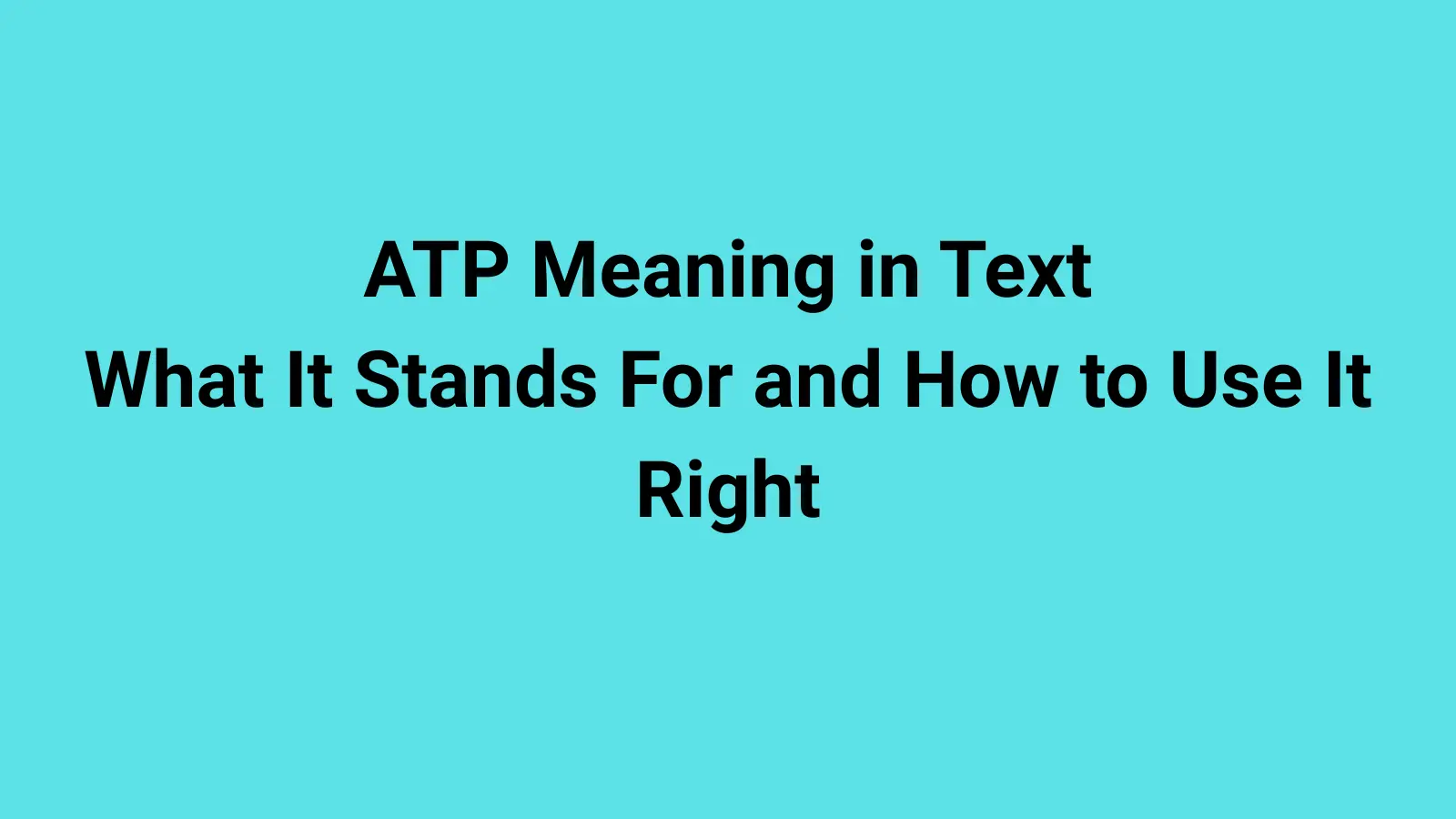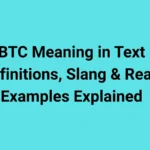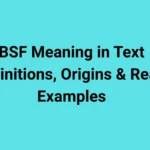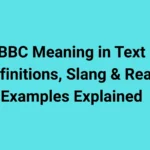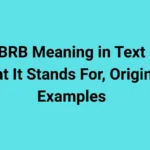If you’ve come across “ATP” in a text and found yourself scratching your head, you’re not alone.
In the fast-moving world of online chats, abbreviations like ATP can mean multiple things depending on who’s typing, the topic, and the tone.
While scientists may think of adenosine triphosphate, most texters aren’t talking about biology—they’re talking slang.
In everyday texting, ATP meaning in text usually boils down to:
- At This Point — the most common in casual chat.
- Answer The Phone — popular in urgent or impatient messages.
- Other niche meanings in sports, gaming, and professional jargon.
This guide breaks down every possible interpretation of ATP, how to decode it in real time, how teens, professionals, and casual users use it, and when to avoid it.
Plus, you’ll get real-life examples, etiquette tips, and a ready-to-use style guide so you never misread or misuse ATP again.
What Does “ATP” Mean in Text? (Quick Answer)
ATP is most commonly shorthand for “At This Point.” In texting or social media comments, it’s a way to express a current stage in feelings, situations, or opinions. For example:
- “ATP, I’m just tired of arguing.”
- “ATP, we might as well order pizza.”
It can also mean “Answer The Phone,” especially if someone’s been calling you:
- “ATP!!! I’ve been calling for 10 mins!”
- “ATP pls—urgent.”
Everything else—like sports or scientific meanings—usually comes from context clues.
Why ATP Has Multiple Meanings in Text
Acronyms survive in texting culture because they’re:
- Short: Just three letters, quick to type.
- Flexible: Can slot into many contexts.
- Context-driven: The meaning is carried by the surrounding conversation.
The same abbreviation can serve different communities:
- Social media slang = “At This Point.”
- Close friends = “Answer The Phone.”
- Sports fans = “Association of Tennis Professionals.”
- Science students = “Adenosine Triphosphate.”
ATP Meaning in Text for Teens and Social Media Users
Among teens, ATP = At This Point 99% of the time.
Examples:
- “ATP, summer needs to hurry up.”
- “ATP, I’m done with schoolwork.”
- “ATP, I just want sleep 😴.”
How it feels in conversation:
- Sets a mood (“At this stage, here’s how I feel”).
- Often paired with emojis for extra tone control.
- Works in casual tweets, DMs, group chats.
Teen texting tip:
ATP is vibe-heavy—use it to summarize feelings without overexplaining.
ATP Meaning in Text for Professionals
In workplace chats, ATP can appear, but it’s rare. If it does, meanings can shift:
- At This Point — in project discussions:
- “ATP, we’ll need to push the launch date.”
- “ATP, the budget is maxed out.”
- “ATP, we’ll need to push the launch date.”
- Answer The Phone — in urgent coordination:
- “ATP—client’s on the line.”
- “ATP—client’s on the line.”
Workplace etiquette:
Spell it out in emails to avoid confusion. In Slack or Teams, ATP might be fine if the team uses it often, but clarity beats cool.
ATP Meaning in Text for Casual Users and Families
With family and close friends, ATP can mean either At This Point or Answer The Phone—tone and urgency decide.
Examples:
- “ATP, let’s just eat leftovers.” (chill, flexible)
- “ATP!!! pick up!!” (urgent, maybe annoyed)
Family-friendly use tip:
Not everyone in older generations knows texting acronyms—spell it out once to avoid mix-ups.
ATP Meaning in Text: Detailed Scenarios
1) ATP = At This Point
When: Expressing current opinion or decision status.
Tone: Casual, summarizing, sometimes frustrated.
Examples:
- “ATP, I don’t even care about the score.”
- “ATP, might as well book the tickets.”
2) ATP = Answer The Phone
When: Urging someone to pick up a call or reply.
Tone: Urgent, direct.
Examples:
- “ATP before I drive over there 😂.”
- “ATP rn—this can’t wait.”
3) ATP = Association of Tennis Professionals
When: Talking sports rankings, tournaments, or players.
Tone: Informative, fan-oriented.
Examples:
- “ATP rankings updated today—Djokovic still #1.”
- “ATP finals were wild this year.”
4) ATP = Adenosine Triphosphate
When: Science or biology context.
Tone: Academic.
Examples:
- “ATP stores and transfers energy in cells.”
- “Learning ATP pathways in bio is tough.”
How to Decode ATP in Real Time
When you see ATP, check:
- Topic: Are they talking feelings? sports? science?
- Urgency: Lots of caps or exclamation marks = “Answer The Phone.”
- Tone: Chill or reflective = “At This Point.”
- Companions: Tennis talk = sports meaning; biology = science.
Real-Life ATP Examples You Can Copy
At This Point:
- “ATP, we just need to relax and see what happens.”
- “ATP, homework is just background noise.”
Answer The Phone:
- “ATP NOW—I’m outside your door.”
- “ATP or I’m texting your mom 😅.”
Using ATP Without Sounding Rude
When ATP = Answer The Phone, soften with:
- Please: “ATP pls—need quick info.”
- Emoji: “ATP 🙏.”
- Reason: “ATP—need to confirm before ordering.”
ATP vs Similar Text Abbreviations
- RN = Right Now (pairs with “ATP rn”)
- TBH = To Be Honest (different tone)
- BTW = By The Way (adds info)
- LMK = Let Me Know (request follow-up)
Common Misreads
- Thinking ATP always means science—nope, texting usually isn’t about cell biology.
- Reading “At This Point” as “Answer The Phone” can cause tension—check tone.
FAQ: ATP Meaning in Text
Q: Is “At This Point” the most common ATP meaning?
A: Yes, in texting and social media.
Q: Can I use ATP in professional settings?
A: Use cautiously—spell out in formal channels.
Q: How do I avoid confusion?
A: Context, tone, and adding one extra word help.
Quick Reference Table
| ATP Meaning | Common Context | Example |
| At This Point | Social media, casual chat | “ATP, I’m over it.” |
| Answer The Phone | Urgent calls/texts | “ATP NOW.” |
| Association of Tennis Professionals | Sports | “ATP rankings dropped.” |
| Adenosine Triphosphate | Science | “ATP is cell energy currency.” |
Conclusion: You’re Now Fluent in “ATP”
In texting, ATP meaning in text most often means At This Point, with Answer The Phone as a close runner-up.
Sports and science meanings pop up only in niche conversations. The key is context: who’s talking, what they’re talking about, and the emotional tone.
Use it casually with friends, clearly in work chats, and spell it out for anyone who might not be acronym-fluent.
